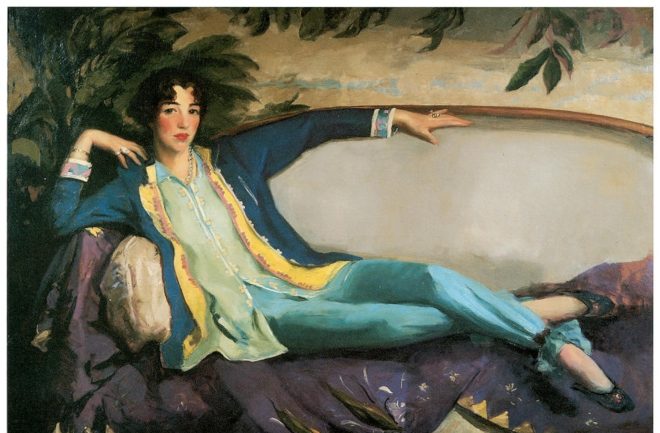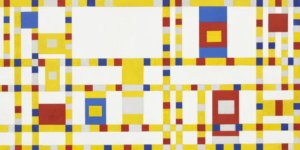Women have undoubtedly made their mark in the art world. Even though they were often overshadowed in the past, today women are aware of their immense contributions to art as we know it. Despite dealing with societal obstacles and a lack of broader support, they fought for what was important to them.
Women collectors are no exception — without them, the history of art institutions as we know it would be vastly different. Let’s have a closer look at how six extraordinary women managed to become great collectors and historical patrons of art:
Gertrude Vanderbilt Whitney
Gertrude Vanderbilt Whitney was the founder of the famous Whitney Museum of American Art based in New York City. Even though she was born into the wealth of the Vanderbilts, Whitney was regarded as a modest philanthropist. Her reputation came mostly from sponsoring the International Composer’s Guild, as well as many other philanthropic activities.
She pursued a career in art, becoming one of the most prominent sculptors of the 1890s after studying under Auguste Rodin. However, she was also a passionate collector and a well-known patron of the arts. In 1907, Whitney turned her New York studio into an art gallery. In later years, she expanded it to be able to host more works. Her collection of about 600 artworks formed the backbone of the Whitney Museum collection as one of the foremost collections of 20th century American art.
Peggy Guggenheim
We’ve already highlighted Peggy Guggenheim as one of the significant figures in the history of art. She was an intriguing, colorful figure, undoubtedly deserving to be remembered among the most dedicated patrons of the art of modern times. Guggenheim was well-known as a bohemian, even before she became interested in art, owing to her family’s wealth and reputation as a niece to Solomon R. Guggenheim, who founded the Guggenheim Museum in New York City. Self-admittedly, her motto was “buy a picture a day,” and soon the museums in the U.S. didn’t seem impressive enough to her. From her short stint with the Guggenheim Jeune gallery in London, Guggenheim eventually opened her New York gallery called Art of this Century devoted to promote Surrealism, Cubist and abstract art. She completely broke the norm of early 1940s high art scene, known as “small kind of gentleman’s club.” It ultimately closed in 1947 — but not before being able to exhibit and highlight the works of prominent female artists like Frida Kahlo, Louise Bourgeois, and Leonora Carrington.

Helen Clay Frick
Helen Clay Frick was an extraordinary woman, well-versed in art since she was in her early twenties. The Frick family was wealthy and already had a significant art collection by the time Helen inherited $38 million and became the wealthiest woman in the United States. After her father’s death, Frick made sure that his splendid collection, which included some of the great masterpieces by Turner, Constable, Gainsborough, and Vermeer, among many Old Master works, would become a stunning public museum. The Frick Collection acquired plenty of great works at Helen Clay Frick’s request as well, namely some incredible artworks by Rembrandt, Goya, Ingres, and Monet, and more. She also established the Frick Art Reference Library, a treasure trove for the community of art historians and researchers, including over 228,000 art books documenting European and American art from the 4th to the mid-20th centuries.
Lillie Bliss
Lillie Bliss, a daughter of a wealthy textile merchant from Boston, was one of the three female founders of The Museum of Modern Art (MoMA) in New York- widely known thereafter as ‘the indomitable ladies.’ Her contribution to the world of art is immense, as she was one of the first major collectors of modern art in New York City. Her love for art was evident in everything she did, and contemporary art especially had a strong advocate in her collection of greatest modern master works by Cézanne, Seurat, Gauguin, Modigliani, and Monet to name a few.
The magnitude of her accomplishments can be gleaned from the fact that modern art was not in demand at the time Bliss believed in its worth and tried to persuade the rest of the art community to agree. Dedicated to her cause, Bliss the car-loving and eccentric art world renegade never married. She spent her time active in the art community, and the MoMA was like her child in many ways. She gifted the newly-founded institution with 150 works of prized art collection, which shaped the museum’score collection and contributed to the newly established museum in its important formative years.

Abby Aldrich Rockefeller
The second founder of the MoMA was Abby Rockefeller, another opponent of conservatism in art institutions. When the Metropolitan Museum of Art categorically refused to have anything to do with contemporary art at that time, she was motivated to shift art institutions away from conversatism. The Met Museum even declined Rockefeller’s modern artwork donations in 1929.
After becoming part of the Rockefellers, a very prominent philanthropist family, through marrying John D. Rockefeller, Jr., Abby had dedicated herself to supporting causes most people in that time found unconventional – such as art and women’s advancement – in fact independently from her husband. As a result, Rockefeller didn’t garner many positive opinions in society for holding the belief that even radical art deserves support, yet she never backed down from the causes she wholeheartedly supported. As a visionary lover of contemporary art, she had a firm opinion that some artists who were considered controversial shouldn’t lose support of patrons because of the nature of new art form they created. Rockefeller gave an invaluable contribution to the MoMA, as her husband provided major financial help to the museum, as well as donating the space for MoMA’sfamous sculpture garden. In 1935, Rockefeller gave 181best paintings from her collection to the museum and was received as ‘the outstanding patron of living artists in the US’ by Time magazine in 1935.
Mary Quinn Sullivan
Mary Quinn Sullivan was the third co-founder of MoMA in 1929. She wasn’t as wealthy as some of the other female art collectors of the era, but she still managed to acquire art by Van Gogh, Picasso, Cézanne, Derain, Modigliani, and other notable artists. Sullivan loved spending her time with women who were pushing the envelope, which is what eventually started her friendship with Bliss and Aldrich Rockefeller.
The trio dreamed of a modern art gallery in New York, and from her early career as an art teacher, Mary Quinn Sullivan was the one who contributed to it by designing its educational mission. Her influence is an enduring part of the institution, despite her leaving the position of the museum’s trustee only four years after its opening. Sullivan opened her own art gallery on Park Avenuehiring a young Betty Parsons in 1932 which might have taken her focus away from the MoMA. However, she still helped establish the institution and remained as a strong supporter of many philanthropic causes and arts programs.

Women collectors have positively shaped the history of art, especially in the realm of emerging and contemporary art. They didn’t back down from doing what they thought every patron of the arts was supposed to do — providing much needed acknowledgements and showcasing venues for those aspiring and unknown artists. They raised their voices, told their stories to the world, and changed the legacy of art – the very same values that we at ARTDEX hold true to our core.
Ultimately, their trailblazing efforts and influences contributed immeasurably to the current art world we engage with. Without women collectors like Gertrude Vanderbilt Whitney, Peggy Guggenheim, Helen Clay Frick, Lillie Bliss, Abby Aldrich Rockefeller, and Mary Quinn Sullivan, and their unwavering support for the arts of their time, it is hard to imagine what the history of modern art and art institutions, treasured by the greater public, would be like today.


![[Left] Kusama with her piece Dots Obsession, 2012, via AWARE, [Right] Yayoi Kusama (Courtesy Whitney Museum of American Art) | Source: thecollector.com](https://www.artdex.com/wp-content/uploads/2024/04/Left-Kusama-with-her-piece-Dots-Obsession-2012-via-AWARE-Right-Yayoi-Kusama-Courtesy-Whitney-Museum-of-American-Art-Source-thecollector.com--300x172.png)




